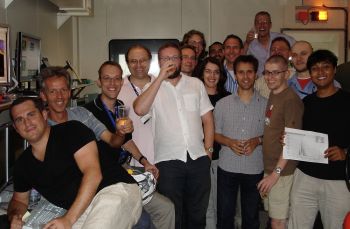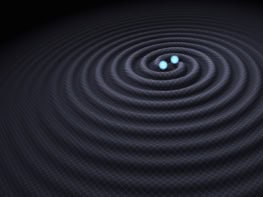
(Credit: Olaf Behrendt)
By Jon Cartwright
Could it be — touch wood — that the Large Hadron Collider (LHC) will make it to the official 10 September start-up date without any further hiccups?
On Friday scientists at the European laboratory CERN were able to tick off two more items on the accelerator’s commissioning list. First, they managed to feed a bunch of protons from the transfer line of the Super Proton Synchrotron (SPS) into the LHC and then steer it some three kilometres round the beam pipe in a counter-clockwise direction. Second, a detector at LHCb — one of the four main experiments at the LHC — got the first taste of collision debris.
The counter-clockwise test, which follows a similar test in the clockwise direction on 8 August, is the most important in terms of preparations for the September switch-on. Feeding proton bunches from the SPS into the LHC (“kicking” as accelerator scientists call it) is a tricky process, requiring pulsed magnets to synchronize with one another at nanosecond precision. “Thanks to a fantastic team, both the clockwise and counter-clockwise tests went without a hitch,” said LHC project leader Lyn Evans in a press statement. “We look forward to a resounding success when we make our first attempt to send a beam all the way around the LHC.”
The detection of particle collisions was more of a confidence boost to all those working at LHCb, the experiment that will seek to examine the differences between matter and antimatter. The collisions themselves were produced at a purposefully positioned concrete block near where the counter-clockwise proton bunch entered the LHC beam pipe. When the proton bunch struck the block, the resultant debris showered 200 m down the pipe and was picked up by the silicon detector at LHCb known as VELO (vertex locator).
“We’re all very, very excited,” said Paula Collins, project leader of VELO, on the phone to me a moment ago. Although on maternity leave, Collins couldn’t resist popping into the LHCb control room on Friday to witness the groundbreaking event. At that time the VELO scientists only powered up a quarter of the detector, but they were reassured enough to power up the whole detector for another successful trial on Sunday. “It’s been 10 years since we started in earnest [to design and build] VELO,” she added.



